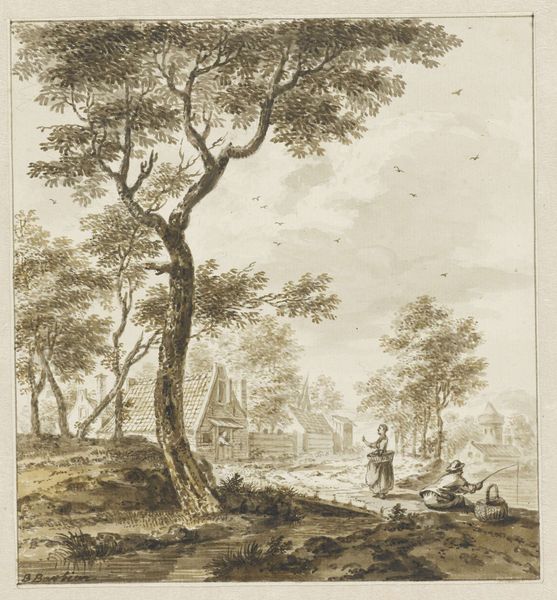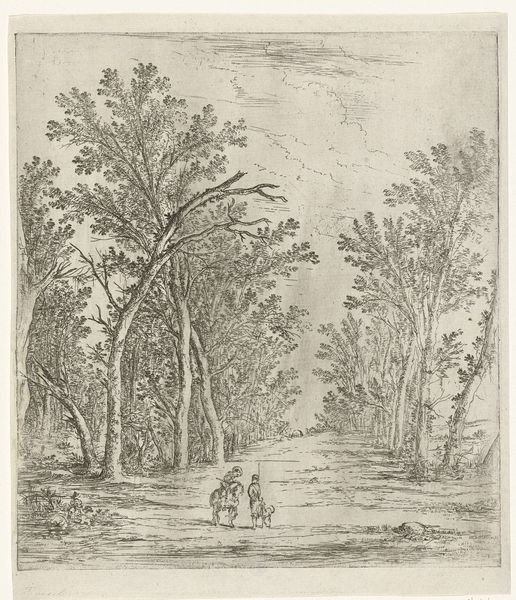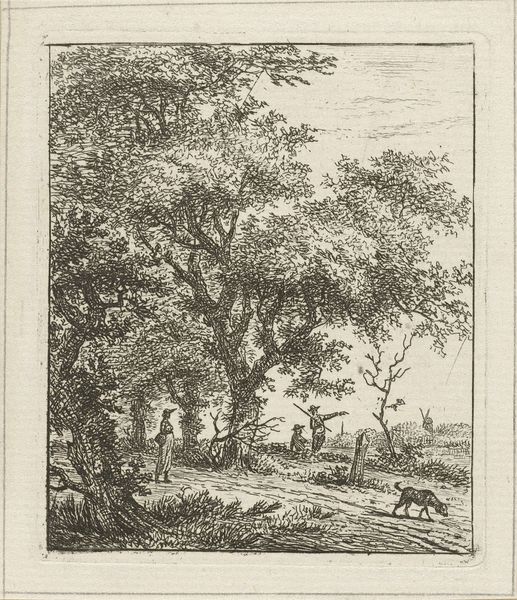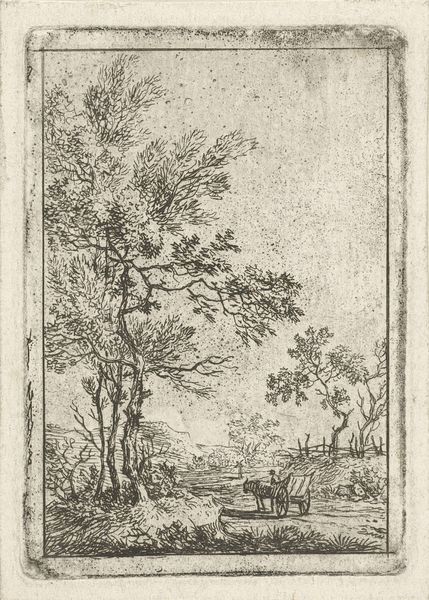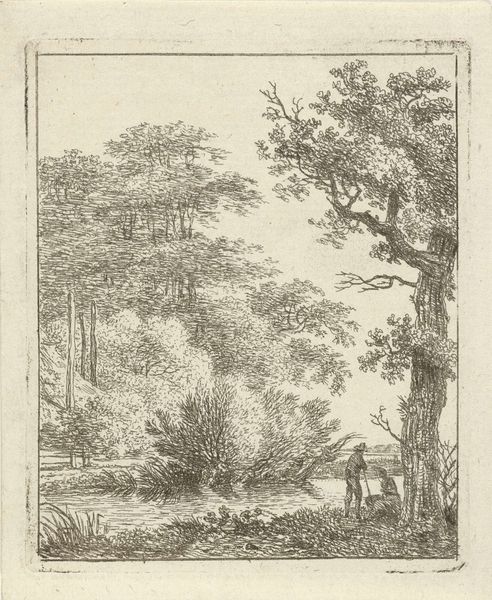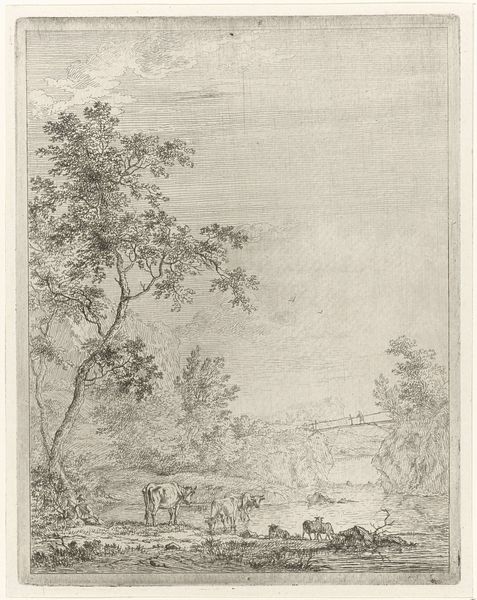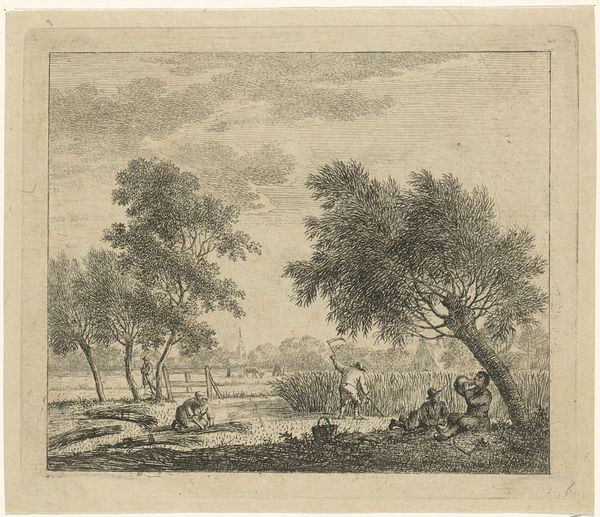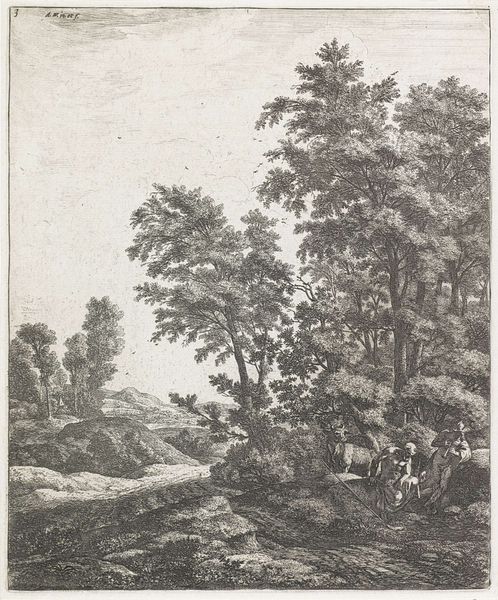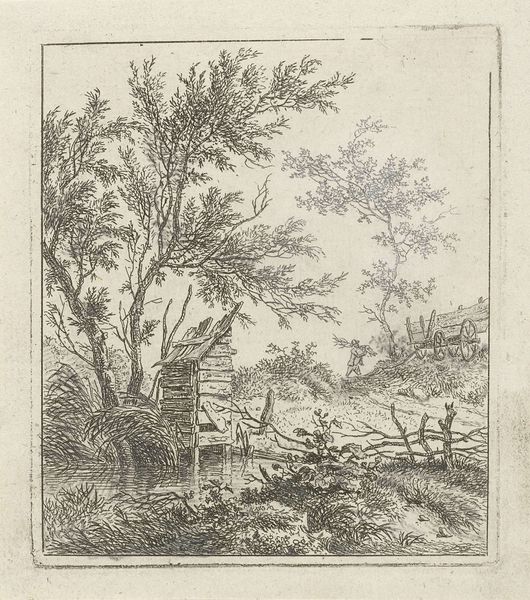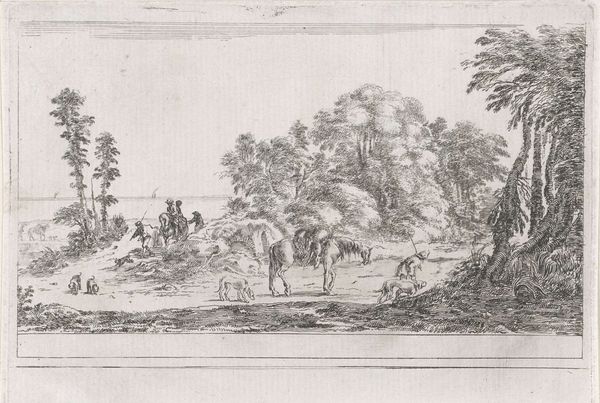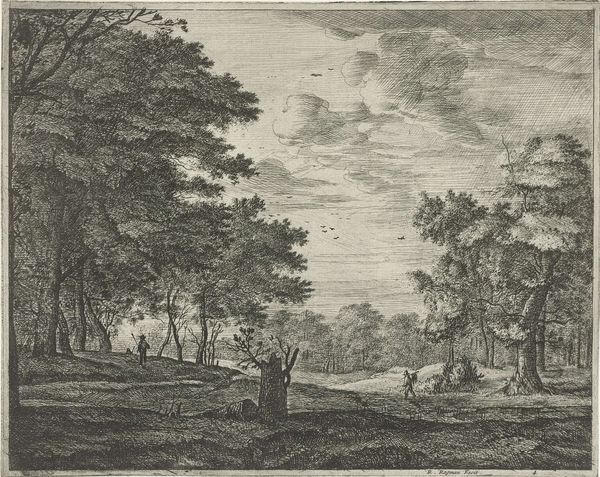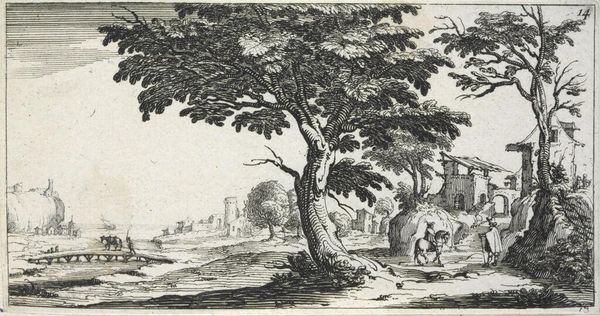
drawing, etching, paper
#
drawing
#
etching
#
landscape
#
figuration
#
paper
#
romanticism
#
genre-painting
Dimensions: height 132 mm, width 90 mm
Copyright: Rijks Museum: Open Domain
Editor: So this etching is titled “Man with Donkey in a Landscape,” created sometime between 1766 and 1815 by Jacob van Strij. The composition feels quite serene and balanced, almost like a stage. What do you see in this piece, particularly regarding its imagery? Curator: The immediate image is indeed peaceful. But I wonder about the symbol of the donkey. Throughout history, it’s been used both to represent humility and stubbornness. Is the man leading it or being led, metaphorically? Editor: That’s interesting! I hadn’t thought of the donkey having a symbolic weight. I suppose I was focused on it as simply part of a pastoral scene. Curator: Exactly! And pastoral scenes, while seemingly innocent, are loaded with symbols. Think of the Roman ideal of Arcadia, a lost golden age. The traveler, the road, the towering tree – these might be understood to suggest life’s journey. It might evoke nostalgia, an imagined simplicity that speaks to cultural memory. Editor: So the etching isn't just a picture, but a way to recall ideas and maybe even simpler times, in a cultural sense? Curator: Precisely. Look at how the tree, in the center of the scene, guides our eyes through it! The landscape offers shelter. There is psychological and cultural baggage. But does the work make you think about the stability or the unpredictability of it? Editor: Hmm… That's a good question. The etching has helped me appreciate the layers of symbols woven in that type of imagery. Curator: Yes! Remember that our engagement changes those memories as the image passes through time and individual experiences.
Comments
No comments
Be the first to comment and join the conversation on the ultimate creative platform.
